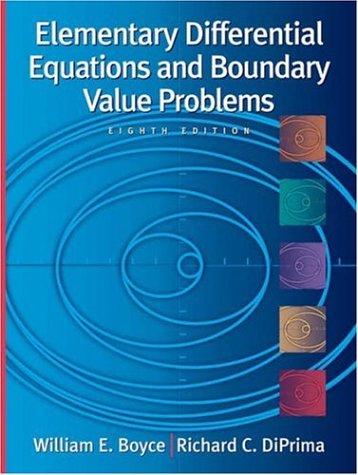Question
Please finish all problems. Unless otherwise noted, each problem is worth 5 points. To obtain full credit, you must use the methods specified in the
Please finish all problems. Unless otherwise noted, each problem is worth 5 points. To obtain full credit, you must use the methods specified in the course text. Please, format your work as explained in chapter 2 of the Frequently Asked Questions (FAQ) document. When doing calculations, use technology wherever possible. There is no need to do calculations by hand unless I direct you to do so.
Normal distribution. The normal distribution is one of the most important probability distributions covered in this course. You should thoroughly understand its characteristics, know when to use it, and know how to find probabilities (i.e. areas) under the curve. You should review the empirical rule (section 2.4). You need to know how z-scores can be used to convert any normal distribution to a standard normal distribution. Make sure you understand how to use the normalcdf() and the normalpdf() functions in the TI83/84.
Sampling distributions and the Central Limit Theorem. The Central Limit Theorem is quite important to the study of statistics. You need to know when this theorem applies and how the Central Limit Theorem provides a way to find the mean and the standard deviation of the sampling distribution of the sample means. It is critical to distinguish when to use the normal distribution or a sampling distribution of the sample means. For example, if the problem asks for the probability that a randomly selected value is less than 20, then you would use the normal distribution. However, if the problem asks for the probability that the mean or the average value is less than 20, then you must use the sampling distribution of the sample means.
Rounding. Avoid rounding until the last step of your calculations. You should round your z-scores to two decimal places when using a normal distribution table and the areas under the normal curve to four decimal places. When using the t-distribution or doing other calculations, round to 3 decimal places unless otherwise directed (Note: see FAQ 4.2).
Allow time. This unit and the next one are generally considered by students to be among the most difficult for the course. Be sure to allow adequate time to complete the necessary assignment tasks.
Assignment Problems
Sections 2.4 and 5.1
1. What is the total area under a normal curve?
2. Getting the Concept If a zz-score is zero, which of the following must be true (select a,b, or c)? State the reason for your answer.
- (a) The mean is zero.
- (b) The corresponding xx-value is zero.
- (c) The corresponding xx-value is equal to the mean.
3.What is the area under a standard normal curve between z=2.25z=2.25 and z=0z=0
4. What is the area under a standard normal curve to the left of z=0.08z=0.08?
5. What is the area under a standard normal curve between z=0z=0 and z=2.86z=2.86?
Problem 6
Instructions Answer the question using the following information.
The normal distribution is a type of probability density function. Areas found under this curve are equivalent to probabilities. For example, the probability that z lies between a and b is denoted P(azb)P(azb) and this probability is the same as the area under the curve between the z-scores, z1=az1=a and z2=bz2=b.
6. Using a standard normal curve, what is P(0.5 Section 5.2 7. SAT Math Scores Suppose the population of SAT math scores follows a normal distribution. Suppose =518=518 and =115=115. What is P(670 Problems 8-10 Instructions Use the Information below to answer the questions. Beagles. The weights of adult male beagles are normally distributed, with a mean of 25 pounds and a standard deviation of 3 pounds. A beagle is randomly selected. 8. Find the probability that the beagle's weight is less than 23 pounds. 9. Find the probability that the beagle's weight is between 23 and 25 pounds. 10. Find the probability that the beagle's weight is more than 27 pounds. Section 5.3 Problems 11 and 12 Instructions Use the Standard Normal Distribution Table to find the z-score that corresponds to the given cumulative area. If the area is not in the table use the entry closest to the area, unless the area is exactly halfway between two entries. In that case, use the z-score halfway between the corresponding z-scores. 11. Area=0.2090Area=0.2090 12. Area=0.5987Area=0.5987 13. Find the z-score that has 78.5% of the standard normal distribution's area to its left. Section 5.4 Problems 14 and 15 Instructions Use the following information to answer the questions. A population with n=100n=100 has a mean =100=100 and a standard deviation =15=15. 14. Find xx. 15. Find xx. 16.True or false? As the size of a sample increases, the standard deviation of the distribution of sample means increases. Problems 17 and 18 Instructions Use the following information to answer the questions. A sample with n=100n=100 has =12=12 and =0.95=0.95. 17. What is P(x>12.2)P(x>12.2)? 18. Would it be considered unusual if x>12.2x>12.2? (Note: See last paragraph page 137.) 19. Nurse Salaries. The population mean annual salary for registered nurses is $59,100. A random sample of 35 registered nurses is selected from this population. What is the probability that the mean annual salary of the sample is less than $55,000. Assume =$1700=$1700.
Step by Step Solution
There are 3 Steps involved in it
Step: 1

Get Instant Access to Expert-Tailored Solutions
See step-by-step solutions with expert insights and AI powered tools for academic success
Step: 2

Step: 3

Ace Your Homework with AI
Get the answers you need in no time with our AI-driven, step-by-step assistance
Get Started


